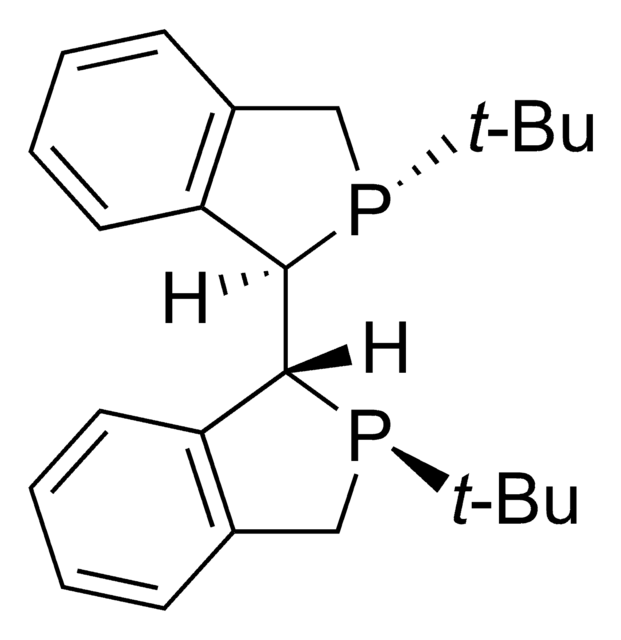712515
O-(3-Carboxypropyl)-O′-[2-(3-mercaptopropionylamino)ethyl]-polyethylene glycol
Mw 3000
Synonyme(s) :
Polyethylene glycol, α-Mercapto-ω-carboxy-PEG
About This Item
Produits recommandés
Forme
powder
Niveau de qualité
Poids mol.
Mw 3000
Pertinence de la réaction
reagent type: cross-linking reagent
Extrémité Ω
thiol
Extrémité α
carboxylic acid
Température de stockage
−20°C
Vous recherchez des produits similaires ? Visite Guide de comparaison des produits
Conditionnement
Code de la classe de stockage
11 - Combustible Solids
Classe de danger pour l'eau (WGK)
WGK 3
Point d'éclair (°F)
Not applicable
Point d'éclair (°C)
Not applicable
Équipement de protection individuelle
Eyeshields, Gloves, type N95 (US)
Faites votre choix parmi les versions les plus récentes :
Déjà en possession de ce produit ?
Retrouvez la documentation relative aux produits que vous avez récemment achetés dans la Bibliothèque de documents.
Les clients ont également consulté
Articles
Sigma-Aldrich.com presents an article regarding Polyethylene Glycol Building Blocks for PEGylation.
Separation of Propionic acid; Acetic acid; Heptanoic acid; Isobutyric acid; Valeric acid; Isocaproic acid; Butyric acid; Isovaleric acid
Progress in biotechnology fields such as tissue engineering and drug delivery is accompanied by an increasing demand for diverse functional biomaterials. One class of biomaterials that has been the subject of intense research interest is hydrogels, because they closely mimic the natural environment of cells, both chemically and physically and therefore can be used as support to grow cells. This article specifically discusses poly(ethylene glycol) (PEG) hydrogels, which are good for biological applications because they do not generally elicit an immune response. PEGs offer a readily available, easy to modify polymer for widespread use in hydrogel fabrication, including 2D and 3D scaffold for tissue culture. The degradable linkages also enable a variety of applications for release of therapeutic agents.
Protocoles
Separation of Pyruvic acid, United States Pharmacopeia (USP) Reference Standard; Tartaric acid, United States Pharmacopeia (USP) Reference Standard; Citric acid, United States Pharmacopeia (USP) Reference Standard; Malic acid, United States Pharmacopeia (USP) Reference Standard; L-Pyroglutamic acid, ≥99.0% (T); Lactic acid, United States Pharmacopeia (USP) Reference Standard; Acetic acid, ≥99.99% trace metals basis; Succinic acid, United States Pharmacopeia (USP) Reference Standard
Global Trade Item Number
| Référence | GTIN |
|---|---|
| 712515-100MG | 4061832844077 |
Notre équipe de scientifiques dispose d'une expérience dans tous les secteurs de la recherche, notamment en sciences de la vie, science des matériaux, synthèse chimique, chromatographie, analyse et dans de nombreux autres domaines..
Contacter notre Service technique
![O-(3-Carboxypropyl)-O′-[2-(3-mercaptopropionylamino)ethyl]-polyethylene glycol Mw 5000](/deepweb/assets/sigmaaldrich/product/structures/271/277/d02536f0-83d7-4416-9cea-f6213e09fe85/640/d02536f0-83d7-4416-9cea-f6213e09fe85.png)





![(R)-1-{(RP)-2-[2-(Diphenylphosphino)phenyl]ferrocenyl}ethylbis[3,5-bis-(trifluoromethyl)phenyl]phosphine ≥97%](/deepweb/assets/sigmaaldrich/product/structures/185/002/97358faf-b2d8-4de5-9315-73b6a8b3ae26/640/97358faf-b2d8-4de5-9315-73b6a8b3ae26.png)
![O-[2-(3-Mercaptopropionylamino)ethyl]-O′-methylpolyethylene glycol 5,000](/deepweb/assets/sigmaaldrich/product/structures/293/792/95ae9557-6907-4575-8903-f5b87ada86e2/640/95ae9557-6907-4575-8903-f5b87ada86e2.png)





